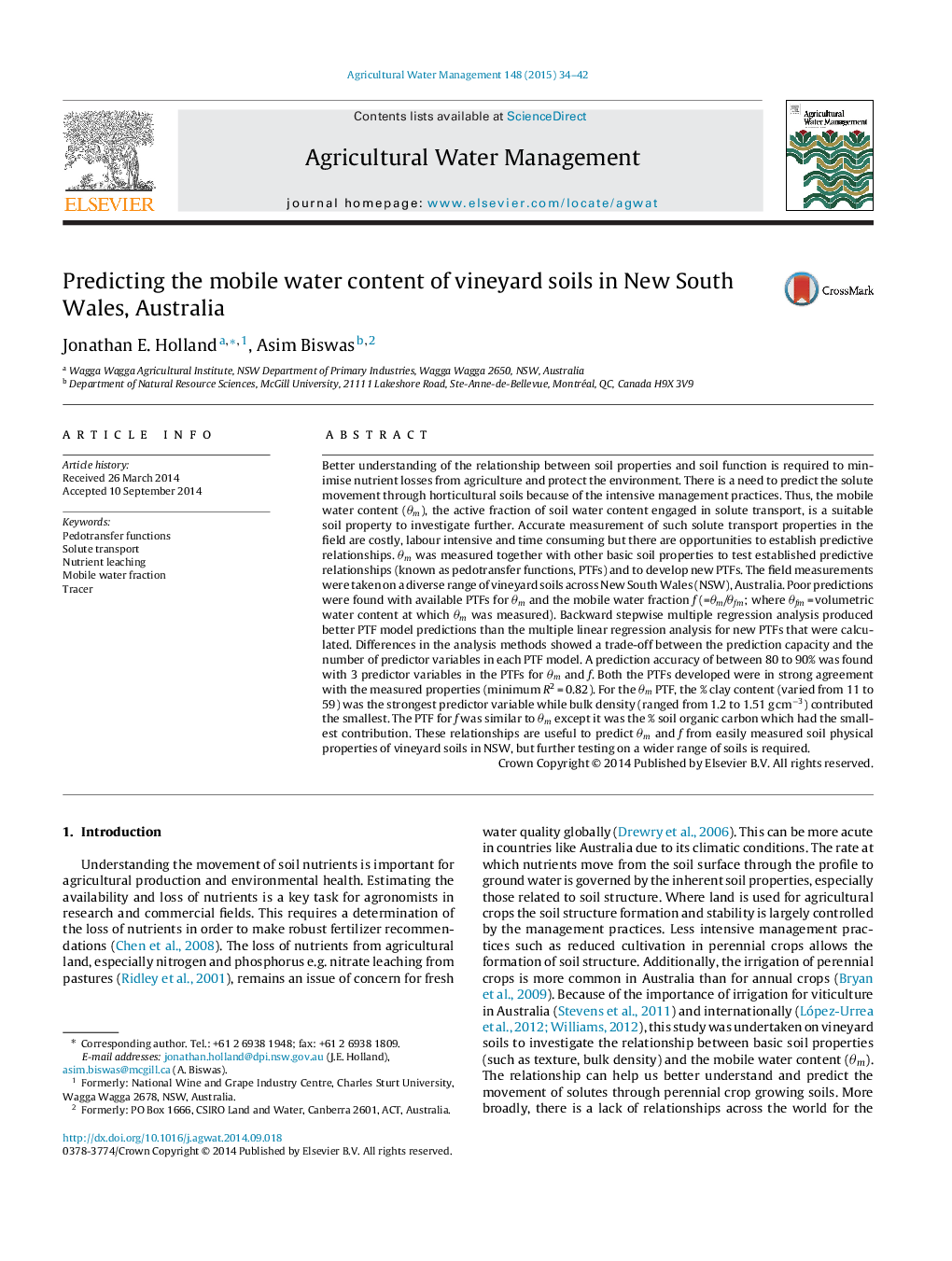| Article ID | Journal | Published Year | Pages | File Type |
|---|---|---|---|---|
| 6363791 | Agricultural Water Management | 2015 | 9 Pages |
Abstract
Better understanding of the relationship between soil properties and soil function is required to minimise nutrient losses from agriculture and protect the environment. There is a need to predict the solute movement through horticultural soils because of the intensive management practices. Thus, the mobile water content (θm), the active fraction of soil water content engaged in solute transport, is a suitable soil property to investigate further. Accurate measurement of such solute transport properties in the field are costly, labour intensive and time consuming but there are opportunities to establish predictive relationships. θm was measured together with other basic soil properties to test established predictive relationships (known as pedotransfer functions, PTFs) and to develop new PTFs. The field measurements were taken on a diverse range of vineyard soils across New South Wales (NSW), Australia. Poor predictions were found with available PTFs for θm and the mobile water fraction f (=θm/θfm; where θfm = volumetric water content at which θm was measured). Backward stepwise multiple regression analysis produced better PTF model predictions than the multiple linear regression analysis for new PTFs that were calculated. Differences in the analysis methods showed a trade-off between the prediction capacity and the number of predictor variables in each PTF model. A prediction accuracy of between 80 to 90% was found with 3 predictor variables in the PTFs for θm and f. Both the PTFs developed were in strong agreement with the measured properties (minimum R2 = 0.82). For the θm PTF, the % clay content (varied from 11 to 59) was the strongest predictor variable while bulk density (ranged from 1.2 to 1.51 g cmâ3) contributed the smallest. The PTF for f was similar to θm except it was the % soil organic carbon which had the smallest contribution. These relationships are useful to predict θm and f from easily measured soil physical properties of vineyard soils in NSW, but further testing on a wider range of soils is required.
Related Topics
Life Sciences
Agricultural and Biological Sciences
Agronomy and Crop Science
Authors
Jonathan E. Holland, Asim Biswas,
